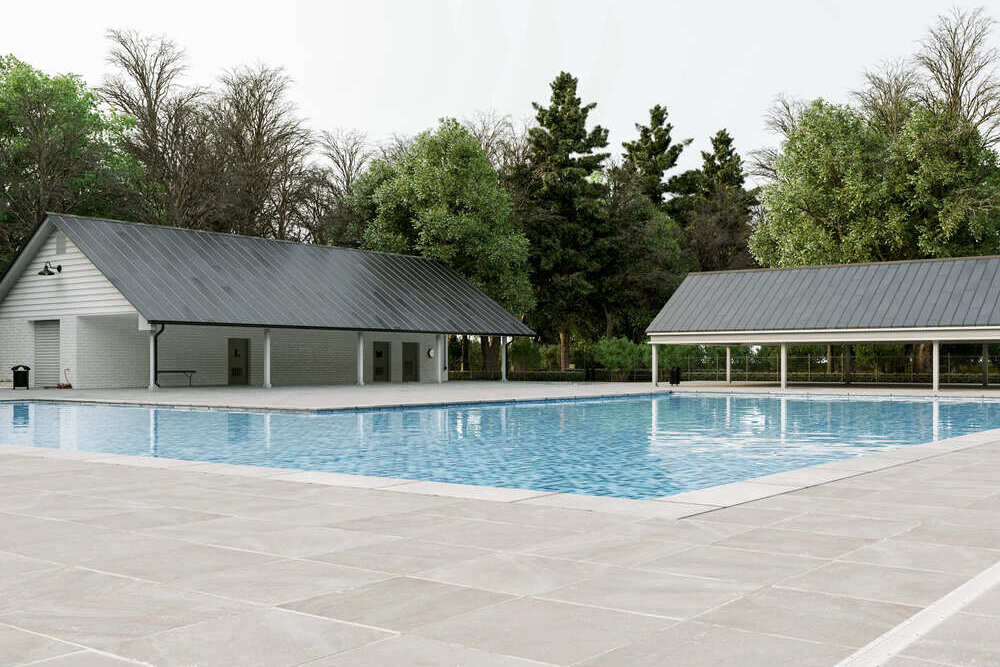
Introduction to 3D Rendering
In the vibrant arena of digital design, the expertise of a 3D exterior rendering company stands out, blending artistic vision with the cutting-edge of technological innovation. This article delves into the captivating world of 3D exterior rendering, underscoring its pivotal role in marrying imaginative creativity with precise technical prowess. From the rudimentary stages of wireframe models to the breathtakingly realistic final visualizations, a 3D exterior rendering company revolutionizes our approach to visualizing and materializing digital art and designs. Its impact is unmistakably visible across a variety of fields, notably in architecture where it breathes life into building exteriors, as well as in the realms of gaming and film production. In this detailed examination, we will navigate through the intricate rendering algorithms and software that underpin this process, while also appreciating the artistic nuances that inject vitality and authenticity into these digital exteriors.
The Essence and Importance of Modern Design
3D rendering has become indispensable in various industries, offering an unparalleled ability to visualize and experiment with designs before their physical realization. This process involves transforming 3D models into understandable images or animations, enabling architects, game developers, and filmmakers to convert their visions into tangible experiences. The significance of 3D rendering extends beyond mere visual representation; it serves as a critical tool for design decision-making, marketing, and client presentations, effectively communicating ideas that are otherwise challenging to convey.
Historical Evolution of 3D Rendering

From Basics to Photorealism: A Journey through Time
The history of 3D rendering is a testament to human ingenuity and technological advancement. In the early 1970s and 1980s, rendering was rudimentary, often limited to simple wireframe models and basic shading techniques. The 1990s saw a significant leap by introducing texture mapping, bump mapping, and radiosity, enhancing rendering realism. Photorealism became a tangible goal in the early 2000s with the advent of ray tracing and global illumination techniques, which simulate how light interacts with objects realistically.
Key Technological Milestones
Notable milestones in 3D rendering technology include the development of the RenderMan Interface Specification by Pixar in 1988, which revolutionized the film industry by providing high-quality, photorealistic image synthesis. Another leap was the introduction of real-time rendering in video games, a feat achieved through advancements in GPU technology and rendering algorithms. Tools like Blender, Autodesk 3ds Max, and Maya have evolved, offering increasingly sophisticated features for creating lifelike images and animations. The ongoing evolution in hardware, particularly with GPUs from NVIDIA and AMD, continues to push the boundaries of what can be achieved in 3D rendering.
Technological Advancements and Their Impact
Each technological advancement in 3D rendering has enhanced the visual quality and broadened the scope of what artists and designers can create. The transition from basic flat shading to sophisticated techniques like subsurface scattering and volumetric lighting has created images nearly indistinguishable from real life. This evolution has profoundly impacted industries such as architecture, where renders can now accurately represent materials, lighting, and environmental conditions, aiding in the design and client approval process.
Technical Aspects of 3D Rendering

Understanding Rendering Algorithms: The Core of 3D Visualization
At the heart of 3D rendering lies a complex array of algorithms designed to translate abstract data into visually compelling Imagery. Among these, ray tracing and rasterization are pivotal. Ray tracing, renowned for its ability to produce photorealistic images, simulates the physical behavior of light by tracing the path of light rays as they interact with virtual objects. This method, albeit computationally intensive, captures effects like reflections, refractions, and shadows with remarkable accuracy. Conversely, rasterization, commonly used in real-time applications like video games, involves converting 3D objects into a 2D image and is faster but less precise in handling light interactions.
Software and Hardware Requirements: The Backbone of Efficient Rendering
The efficiency and quality of 3D rendering are heavily contingent upon both software and hardware. Software tools like Autodesk Maya, Blender, and Cinema 4D offer diverse functionalities, ranging from modeling and animation to rendering and texturing. These applications are complemented by powerful rendering engines such as V-Ray, Unreal Engine, and Unity, each with unique capabilities tailored to specific industry needs. On the hardware front, GPUs (Graphics Processing Units) are indispensable. High-performance GPUs from NVIDIA (like the Quadro series) and AMD (such as Radeon Pro) significantly reduce rendering times, enabling the processing of more complex and detailed scenes. Additionally, the rise of cloud-based rendering services has democratized access to high-end rendering capabilities, allowing designers and artists to leverage massive computing power remotely.
Optimization Techniques in Rendering
Optimization is crucial in rendering, particularly balancing visual fidelity and computational demands. Techniques like level of detail (LOD) rendering, where the detail of 3D models adjusts based on their distance from the viewer, help maintain performance without compromising overall quality. Baking, another vital technique, pre-calculates lighting and texture information stored as texture maps, reducing real-time computational load. In architectural visualization, techniques like occlusion culling (removing objects not visible to the camera from the rendering process) and efficient material and light sampling are instrumental in achieving high-quality renders within reasonable time frames.
Artistic Elements in 3D Rendering
The Role of Aesthetics and Design Principles
While the technical prowess of 3D rendering is undeniable, its artistic aspects are what imbue renders with life and emotion. Applying fundamental design principles—balance, contrast, rhythm, and harmony—is essential in visually appealing and meaningful renders. A deep understanding of color theory, composition, and lighting is crucial for artists to convey the right mood and narrative in their visualizations. For instance, warm or cool lighting can drastically alter the perception of space in architectural rendering, influencing the viewer’s emotional response.
Case Studies of Artistic Renderings
Examining successful renderings in various fields offers valuable insights into the marriage of art and technology. In the film industry, movies like ‘Avatar’ and ‘Toy Story showcase the pinnacle of artistic rendering, where every frame is a testament to meticulous attention to detail, lighting, and texture. In architecture, firms like Zaha Hadid Architects demonstrate how renderings can be used for representation and as a form of art, pushing the boundaries of imagination and functionality. Video games like ‘The Last of Us Part II’ demonstrate the seamless integration of realistic environments and dynamic storytelling through expert lighting, texture, and composition.
Realism and Emotion in Renderings
Achieving realism in 3D rendering is not merely about technical accuracy; it’s about evoking feelings and responses from the viewer. This involves a delicate balance between hyper-realistic detailing and artistic interpretation. The choice of camera angles, the subtlety of shadows, and the interplay of light and materials all contribute to the narrative of the render. For instance, in interior design renderings, the placement of everyday objects, the play of natural and artificial light, and the texture of fabrics can transform a sterile 3D model into a space that feels warm, lived-in, and real.
Innovative Artistic Techniques in Rendering
Artists continually explore new techniques to elevate their artistry in 3D renderings. Techniques like non-photorealistic rendering (NPR) offer a stylistic alternative to realism, providing a more illustrative or abstract aesthetic. This approach is prevalent in architectural conceptualization, where it can convey ideas and moods rather than strict architectural details. Another emerging trend is procedural generation, where algorithms create textures and patterns, leading to unique and intricate designs that would be time-consuming to model manually. This approach adds artistic flair and introduces unpredictability and originality in the design process.
3D Rendering in Various Industries
Diverse Applications in Architecture, Gaming, Film, and Virtual Reality
3D rendering has permeated many industries, each harnessing its power to serve distinct purposes. In architecture, rendering is the cornerstone of project visualization, enabling architects to present lifelike representations of buildings long before they are built. This assists in design and planning and plays a crucial role in client communication and marketing. The gaming industry, on the other hand, relies on rendering to create immersive and visually stunning environments, pushing the boundaries of realism and player engagement. In film, rendering brings to life everything from fantastical creatures to entire worlds, offering filmmakers the tools to manifest their most ambitious visions. Lastly, in the burgeoning field of virtual reality, rendering is the linchpin that creates convincing and interactive 3D environments, essential for an immersive VR experience.
Industry-Specific Rendering Techniques and Innovations
Each industry employs specific rendering techniques to meet its unique requirements. Architectural renderings often focus on realistic lighting and textures to accurately represent materials and how a structure interacts with its surroundings. Techniques like photogrammetry create detailed and accurate models of existing landscapes and buildings. In contrast, the gaming industry prioritizes real-time rendering capabilities, optimizing for performance without compromising visual quality. Techniques like deferred shading and physically based rendering (PBR) are standard. The film industry, striving for the highest level of realism, often uses advanced rendering techniques like ray tracing and complex particle systems to create detailed, dynamic, and highly realistic scenes. Virtual reality adds another layer, prioritizing visual fidelity and rendering performance to maintain a high frame rate for a seamless user experience.
Future Trends and Developments in 3D Rendering

Emerging Technologies and Their Potential Impact
The future of 3D rendering is intrinsically linked to advancements in both software and hardware technologies. Machine learning and AI are set to revolutionize rendering processes, with potential applications in automated texture generation, intelligent light sampling, and even predictive rendering, where AI anticipates the subsequent frames in animations. Another significant development is the evolution of real-time ray tracing, which is currently integrated into more consumer-level hardware and promises to bring cinema-quality visuals to everyday applications.
Cloud rendering services are:
- Another area of growth.
- Offering vast computing resources to professionals and hobbyists alike.
- Democratizing access to high-end rendering capabilities.
The Future of Realism in 3D Imagery
As technology advances, pursuing hyper-realism in 3D rendering continues to be a primary goal for many industries. This pursuit is not just about enhancing visual fidelity but also about improving efficiency and accessibility. Techniques like virtual cinematography, where scenes are rendered in real-time and can be interacted with like a natural environment, are becoming more prevalent, particularly in the film and gaming industries. In architecture, the integration of rendering with augmented and virtual reality technologies enables more interactive and immersive presentations of designs. Sustainability in rendering processes is also becoming a significant consideration, with efforts to reduce the environmental impact of the computational resources required for high-end rendering.
Blurring the Lines Between Digital and Physical Realities
The line between digital and physical realities continues to blur as 3D rendering technologies evolve. With advancements in haptic feedback and VR and ultra-realistic rendering, virtual experiences are becoming increasingly indistinguishable from real life. This convergence has far-reaching implications, not only in entertainment and design but also in fields like education, healthcare, and social interaction, where virtual environments can offer new methods of engagement and interaction.